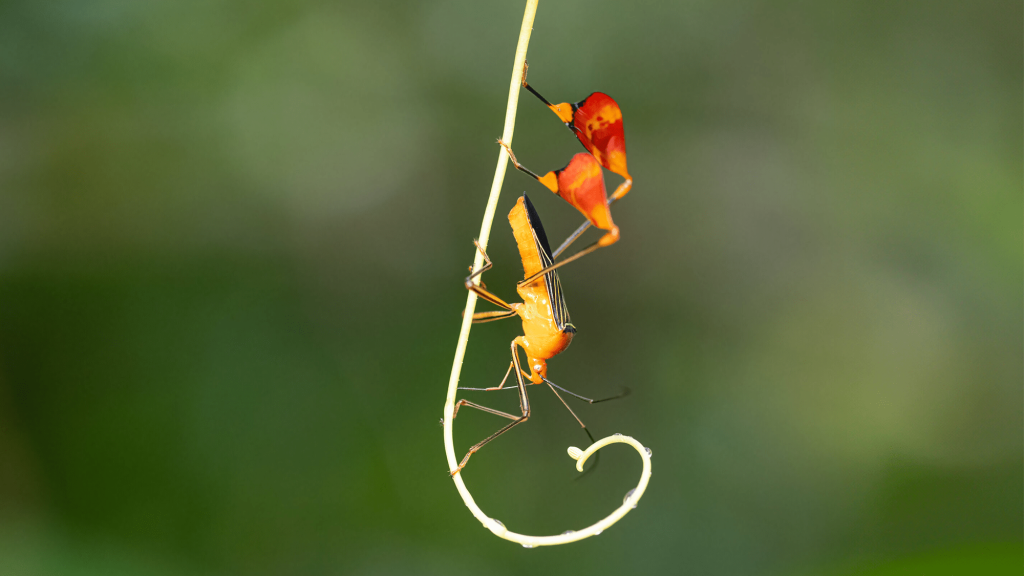In the forests of Panama, the matador bug (Bitta alipes) frequently looks like it is waving. The insect uses the red flag-looking appendages on its hind legs to perform an intricate and mysterious display. Now, we have even more evidence that this funky leg dance has a serious purpose–telling predators to buzz off. The new findings are detailed in a study published today in the journal Current Zoology.
Previously scientists thought that male matador bugs waved their leg flags to attract a female. But when scientists tested it, they found no evidence. Males and females both wave their legs and the waving was not related to courtship or competition.
In a 2024 study, scientists taped red flags taped to crickets’ hind legs to imitate the matador bugs and see how predatory birds responded. When the birds were avoiding the “fake” matadors’ hind legs, it indicated that the flags were actually a defense mechanism and not used for mating.
To learn more about what the matador bugs are doing, a team from the Smithsonian Tropical Research Institute (STRI) exposed the bugs to two different types of arthropods–praying mantids and katydids. They recorded close to 3,000 leg waves in total.
On average, the matador bugs increased their waving behavior seven times more in the presence of the predatory mantids. They barely even responded to the harmless katydids. What was even more telling, is that the mantids did not attract the matador bugs that were actively waving. According to the team, this indicates that waving is an anti-predator behavior and strategically deployed when danger is near.
To see if similar behavior occurs in other flag-legged species, the team studied direct observations taken in Panama and searched for videos online. At least five related flag-legged species display similar waving behaviors. This hints at an important and broad evolutionary strategy among these tropical plant-feeding insects.
Additionally, all of these flag-waving insects are known to feed on toxic passionflower vines. The bugs’ bold movements could be a way to advertise their own chemical defenses from eating toxic plants. However, the way that this helps the bug reduce predatory attacks is still a mystery. Are the bugs communicating something akin to, “Hey, I’’m toxic” or intimidating their attackers with exaggerated leg motions?
“We’re left with more questions than answers,” said study co-author and evolutionary biologist Ummat Somjee. “But that’s the beauty of studying insects — there are hundreds of thousands of species, most of them completely unstudied, and every time we look closely we uncover behaviors that change the way we think about evolution.”


